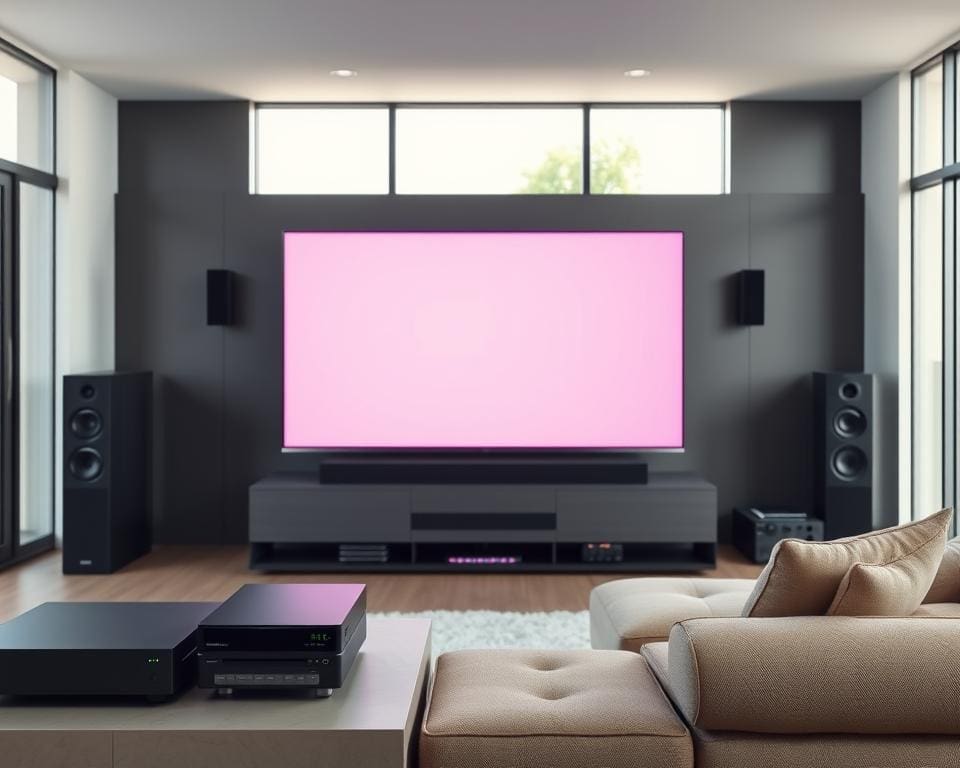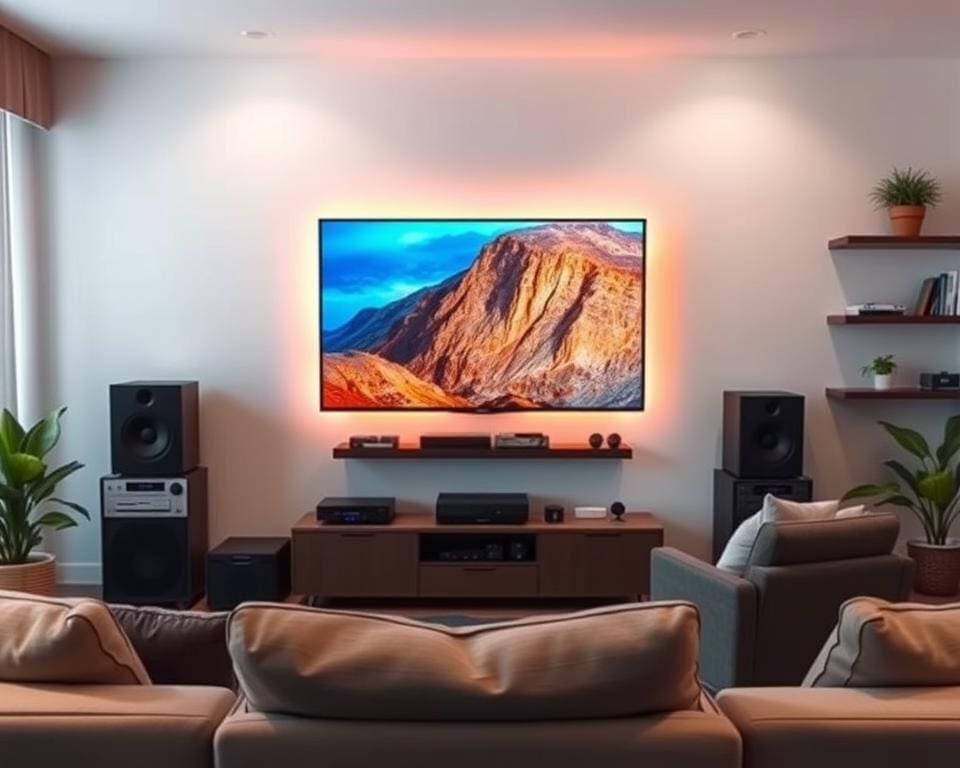The emergence of smart TVs has ushered in a transformative era in home entertainment, redefining the way audiences engage with media and technology. By integrating internet connectivity into traditional television functions, smart TVs offer unparalleled access to a plethora of online services that enhance the viewing experience. This technology evolution is not merely about watching programmes; it fosters a level of interactivity and engagement that captivates users like never before. Major brands such as Samsung, LG, and Sony are leading this revolution, continually innovating to meet evolving consumer expectations in a fiercely competitive market. The shift away from conventional broadcasts towards these advanced devices signifies a commitment to convenience and personalisation, ensuring that every viewer can curate their unique entertainment journey.
The Rise of Smart TVs in Modern Homes
The evolution of televisions has been a remarkable journey, dramatically reshaping how we experience entertainment at home. In the early 20th century, analogue TVs marked the beginning of a new era, evolving through significant milestones such as the introduction of colour broadcasts in the 1950s. As technology advanced, cable and satellite systems emerged, broadening the scope of viewing options. The transformative leap to digital broadcasting, paired with the rise of the internet, paved the way for smart technology in the late 2000s. Modern televisions now incorporate built-in applications and web browsing capabilities, merging traditional media with the digital landscape.
Historical Context of Television Technology
Over the years, the evolution of televisions has been driven by advancements in technology and changing consumer preferences. The introduction of smart TVs allowed for a seamless blend of entertainment options, providing access to various streaming services and applications. This innovative approach has redefined home media systems, encouraging viewers to rethink their engagement with content. Today’s TVs are equipped not only for traditional broadcasts but also as gateways to an expansive world of digital content.
Market Trends and Consumer Adoption
Recent market trends indicate a substantial surge in the adoption of smart TVs, with global sales surpassing 200 million units. This significant growth correlates with an increased demand for streaming services such as Netflix, Amazon Prime Video, and Disney+. Consumer preferences are shifting towards devices that offer more than just viewing capabilities. Shoppers now seek home media systems that integrate smart home functionality, reflected in the rising popularity of advanced technologies like 4K and OLED screens. The ever-evolving landscape of smart TVs continues to attract users eager for enhanced viewing experiences.

How Smart TVs Are Changing Home Entertainment
The advent of smart TVs marks a significant milestone in the entertainment evolution, reshaping how audiences consume and engage with content. These devices have revolutionised home entertainment by providing unprecedented streaming access. Viewers now enjoy a diverse range of on-demand content, liberating them from the constraints of traditional television schedules.
Access to Streaming Services
Smart TVs unlock virtually unlimited access to streaming services, allowing viewers to dive into an expansive world of entertainment. Platforms like Netflix, Amazon Prime Video, and Disney+ bring a multitude of options straight to the living room. This transformation has led to the rise of binge-watching culture, as users relish the ability to watch their favourite shows and films at their convenience. With this enhanced streaming access, discovering new content and genres has become part of the daily viewing ritual.
Personalised Viewing Experiences
Furthermore, smart TVs introduce user-centric viewing that personalises the way content is consumed. Algorithms assess individual preferences, curating tailored recommendations that enrich the viewing experience. Features like user profiles empower each family member to have unique content suggestions, ensuring that everyone finds what they love. This level of personalisation not only fosters a more enjoyable atmosphere but encourages exploration of new titles one might not consider otherwise.
The Role of Artificial Intelligence in Smart TVs
Artificial intelligence is revolutionising the way we interact with smart TVs, enriching the overall viewing experience. By leveraging cutting-edge technology, smart TVs now offer incredible features that personalise entertainment and streamline home management.
AI-Powered Recommendations
With the help of artificial intelligence, smart TVs can provide tailored AI recommendations that resonate with individual viewer preferences. These algorithms meticulously analyse user behaviour, gathering insights from what you watch and how often you engage with specific content. Over time, they adapt their suggestions, transforming your entertainment choices into a uniquely customised experience.
Voice Control Features
Voice control technology has emerged as a fundamental aspect of modern smart TVs. With integration capabilities for popular voice assistants such as Amazon Alexa and Google Assistant, users can effortlessly search for shows, adjust settings, and navigate menus using simple voice commands. This innovation not only simplifies the user interface but also enhances accessibility for all family members.
Smart Home Integration
Smart TVs act as pivotal elements within the realm of smart home devices. They provide a centralized hub from which users can manage various connected solutions, including lighting, thermostats, and security systems. This integration allows for a seamless home management experience, making it easier to control multiple devices directly from the comfort of your sofa.
The Impact of Smart TVs on Content Creation
The rise of smart TVs has ushered in a transformative era for content creation, reshaping how creators engage with diverse audiences. With the ability to reach viewers through a multitude of digital platforms, opportunities for independent creators have multiplied. This moment in history represents a significant shift in the narrative of media production and consumption.
New Opportunities for Creators
Smart TVs have expanded the landscape of content creation, allowing creators to distribute their work on various streaming services. Platforms such as YouTube and Vimeo offer independent artists a chance to showcase their talent, fostering an environment rich in diversity. This accessibility encourages creators to explore new genres and multimedia formats, enhancing the overall quality of available content. Enhanced monetisation options incentivise creators to invest in high-quality productions, nurturing an environment ripe for innovation.
Interactive Content and User Engagement
Incorporating interactive media into the smart TV experience has revolutionised audience engagement. Viewers can now participate in polls during live broadcasts or immerse themselves in gaming experiences, turning passive watching into an engaging event. Such features cultivate a stronger connection between creators and their audience, fostering community loyalty while enriching viewer experiences. This interactive approach not only benefits creators but also offers advertisers unique opportunities to connect with consumers in a meaningful way.
Enhancing Family Entertainment with Smart TVs
Smart TVs are revolutionising family entertainment by providing features that cater to the diverse needs of households. With capabilities such as multi-user profiles and robust parental control options, these devices create a safe and personalised viewing environment for everyone.
Multi-User Profiles and Parental Controls
Multi-user profiles allow family members to maintain individualised settings and content recommendations. This feature enhances the overall user experience, making it easier for each person to access preferred genres or series. The integration of parental control options further strengthens these profiles, enabling guardians to manage and restrict what children can watch. Such tools empower parents to limit access based on specific ratings or categories, ensuring young viewers encounter only suitable content.
Family-Friendly Features and Apps
Many smart TVs come equipped with various family-friendly apps that focus on delivering wholesome entertainment. These kid-friendly apps include educational programmes and interactive games, encouraging family bonding through shared activities. Smart TVs broaden access to children’s shows and engaging content, creating an inviting platform where families can experience enjoyment together. A variety of built-in applications further enhances this accessibility, making it easier to discover suitable viewing options that promote learning and fun.
Comparing Smart TVs to Traditional Televisions
The evolution of television technology brings forth a fascinating performance comparison between smart TVs and traditional TVs. As consumers increasingly seek enhanced viewing experiences, understanding the differences in performance and cost becomes crucial.
Performance and Quality Differences
Smart TVs significantly outshine traditional televisions in terms of performance and picture quality. With the shift towards high-definition and ultra-high-definition displays, users can enjoy vibrant colours and remarkable clarity that traditional models simply cannot offer. The advanced processing technologies integrated within smart TVs contribute to a smoother viewing experience, minimising lag and buffering issues during streaming sessions. Additionally, the support for High Dynamic Range (HDR) technology enhances the audiovisual experience, making scenes come alive with striking detail.
The Cost of Ownership Over Time
Although smart TVs may entail a higher initial investment compared to their traditional counterparts, a thorough cost analysis reveals enticing long-term benefits. The growing availability of streaming services diminishes the need for costly cable subscriptions, leading to substantial savings. Furthermore, modern smart TVs often boast improved energy efficiency, contributing to lower utility bills. As these devices receive regular software updates, their technology lifespan extends beyond that of traditional televisions, allowing for continued relevance and functionality throughout the years.
The Future of Home Entertainment with Smart TVs
The future of entertainment is poised for a remarkable transformation, largely driven by the relentless evolution of smart TVs. As technology advances, consumers will find themselves immersed in experiences that were once the realm of science fiction. The next generation of smart TVs promises increased interactivity and improved AI capabilities, which will revolutionise how viewers engage with content. Imagine choosing a programme not just from a menu, but through intuitive voice commands or even gestures. This is not just the ambition of an industry; it is an emerging reality.
Smart technology advancements are also integrating seamlessly with exciting innovations such as virtual reality, paving the way for an unprecedented viewing experience. Consumers are becoming accustomed to instant access to a myriad of content, and as this expectation grows, so too will the capabilities of smart TVs. These devices will become more than just screens; they will evolve into dynamic gateways that adapt to individual preferences and moods, curating an entertainment journey uniquely crafted for each household.
Furthermore, advancements in display technology will forever alter the evolution of viewing, with developments in 8K televisions and enhanced data storage capabilities promising to revolutionise image quality and performance. The immersive potential of high-definition content, combined with the smarts of future TVs, ensures that the viewing experience will be richer and more engaging than ever. As these innovations unfold, we will witness smart TVs redefine home entertainment, making family movie nights or solo binge-watching not just a pastime but a fully immersive event.









